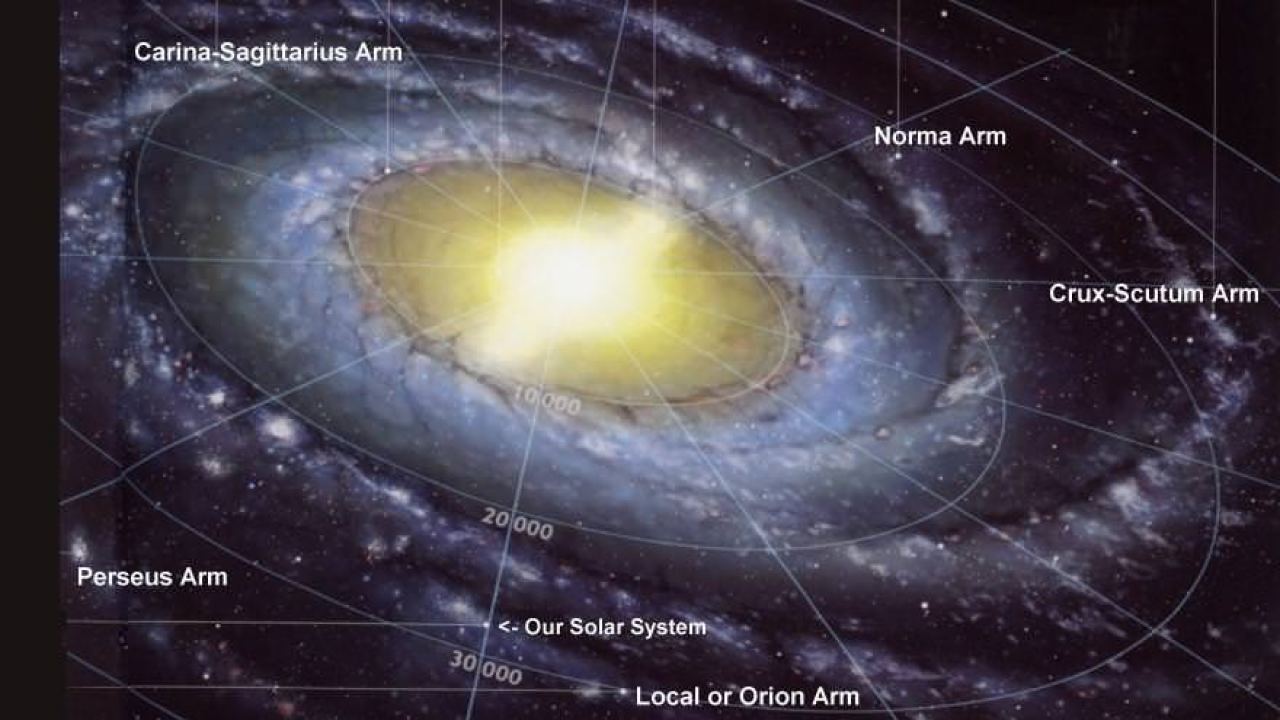
Exploring the Vast Expanse: The Name of Our Home Galaxy – The Milky Way
The night sky has fascinated humans for millennia, inspiring countless stories, myths, and scientific inquiries. Among the numerous celestial objects and wonders that adorn the cosmos, one stands out as not only a source of fascination but also as our very own celestial abode – the Milky Way. In this article, we delve into the captivating tale of our home galaxy, its discovery, structure, and the significance of its name.
Astronomy’s Greatest Puzzle: The Milky Way Revealed
The first humans to gaze up at the night sky could see the Milky Way arching across the heavens. They marveled at this shimmering band of light, unaware that it was composed of countless stars beyond the reach of their imaginations. It wasn’t until the development of telescopes in the early 17th century that astronomers began to unravel the mystery of this luminous band.
Galileo’s First Clues
In 1609, Galileo Galilei turned his newly crafted telescope towards the Milky Way. His observations revealed that it was not a diffuse band of light but a multitude of individual stars too faint to discern with the naked eye. This groundbreaking realization marked the beginning of humanity’s understanding of our galaxy.
Island Universes and the Great Debate
As telescopes improved, astronomers began to question whether the Milky Way was the entire universe or just one among many galaxies. This sparked a vigorous debate in the early 20th century known as the “Great Debate” between astronomers Harlow Shapley and Heber Curtis. Shapley argued that the Milky Way was the entire universe, while Curtis believed in the existence of other “island universes” beyond our galaxy.
Edwin Hubble’s Game-Changing Discovery
In the 1920s, American astronomer Edwin Hubble settled the debate definitively by demonstrating that the Milky Way was just one of billions of galaxies in the observable universe. Hubble’s observations of distant galaxies and their redshifts provided evidence that the universe was expanding, and other galaxies were receding from us.
The Structure of the Milky Way
The Milky Way is an immense and intricate galaxy, and understanding its structure has been a monumental task for astronomers. Modern astronomical techniques have allowed us to piece together a coherent picture:
1. Spiral Galaxy
The Milky Way is classified as a barred spiral galaxy. It possesses a central bar-shaped region surrounded by spiral arms, which extend outward in a pinwheel fashion. Our solar system resides in one of these spiral arms, known as the Orion Arm.
2. Stellar Population
The Milky Way is home to an estimated 100 to 400 billion stars. These stars are not evenly distributed; they form clusters, and the distribution of stars follows a density wave pattern, with regions of higher and lower star concentrations.
3. Dark Matter Halo
Around the visible matter in the Milky Way, there exists a mysterious and invisible component known as dark matter. This dark matter halo exerts gravitational influence on stars and galaxies, contributing to the stability and structure of the Milky Way.
4. Supermassive Black Hole
At the center of the Milky Way, approximately 26,000 light-years from Earth, lies a supermassive black hole called Sagittarius A*. This colossal entity, with a mass equivalent to millions of suns, governs the motions of stars in its vicinity.
The Name “Milky Way”
The name “Milky Way” has ancient origins and is deeply rooted in mythology. In Greek mythology, it was associated with the legend of the baby Zeus. The story goes that Zeus’s mother, Rhea, hid him in a cave on Mount Ida in Crete to protect him from his father, Cronus, who was known to devour his children. To prevent the infant’s cries from being heard, she enlisted the help of the Curetes, who clashed their spears and shields to create a cacophony. To further muffle the sound, Rhea gave the infant Zeus a nursemaid, the divine goat Amalthea, who nourished him with her milk.
The spilled milk from Amalthea’s udder, according to mythology, formed the Milky Way. This celestial name has since endured, connecting our scientific understanding of the galaxy with the rich tapestry of human storytelling.
Conclusion
The Milky Way, our home galaxy, has captivated human imagination for centuries. From Galileo’s early observations to Hubble’s groundbreaking discoveries, the understanding of the Milky Way has evolved, revealing its immense size, complex structure, and its place among the countless galaxies that populate our universe. The name “Milky Way” itself serves as a reminder of the deep connection between science, mythology, and our innate curiosity about the cosmos. As we continue to explore the mysteries of our galaxy and the broader universe, the Milky Way will undoubtedly remain a symbol of wonder and inspiration for generations to come.

